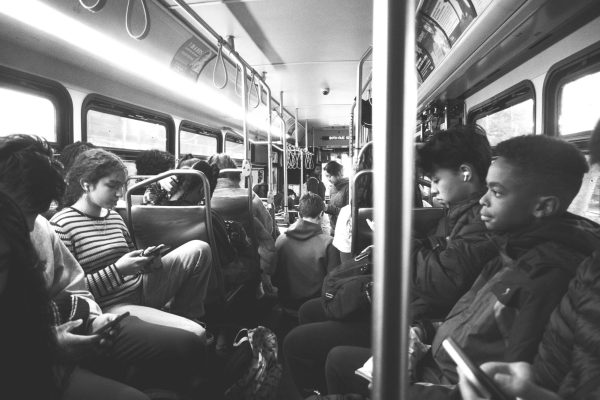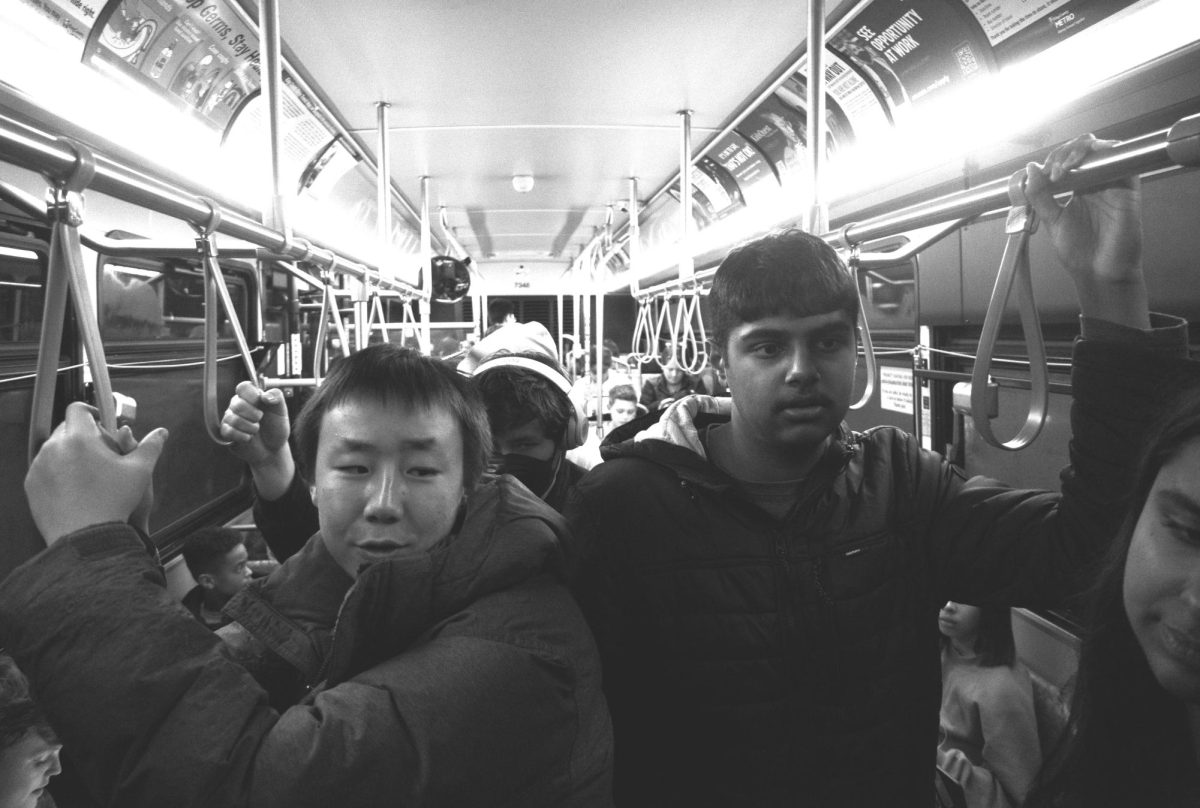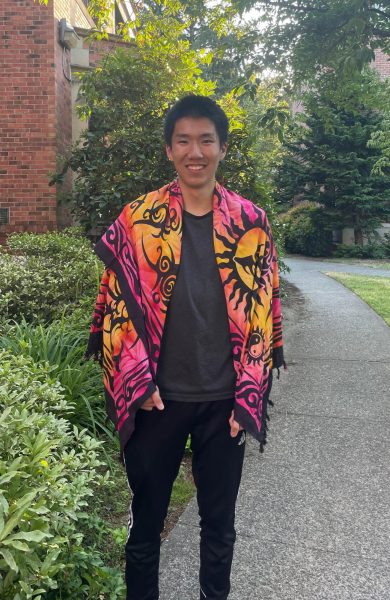Amidst the cacophony of fifth graders screaming, freshmen frantically finishing their homework, and sophomores snoozing, there lies a less acknowledged issue on the 989 and 981 buses at Lakeside. For the students of the Eastside, the daily bus ride is a test of endurance and safety, marked by a glaring absence: a place to sit.
The journey can take 45 to 60 minutes in the mornings and up to 90 minutes in the afternoons. “It’s like a game of musical chairs, but the music never stops, and there are no chairs,” quips Trisha C. ’26, as she balances her backpack in one hand and grips the overhead rail with the other. The discomfort is palpable, with students unable to doze off or focus on last-minute study sessions. Because the afternoon 989 and evening 981 are half the size of standard Metro buses, sometimes as many as 12 students do not have a seat during the ride, exceeding Metro maximum capacity standards.
The issue runs deeper than mere discomfort. Safety concerns are paramount, especially on the activity bus route. Amanda W. ’24, a regular of the 989 and 981, says, “I don’t have another way to get to and from school. For my first couple of years, I had a great experience on the bus, but this year the buses are so small.” Trisha C. ’26 agrees, sharing that “having to stand is also dangerous because the bus is on the highway most of the time.” The small buses, designed for shorter routes and fewer passengers, are ill-equipped for the demands of the Eastside’s student population, whose route features many turns, many stops, and extended time on the highway due to traffic. The lack of seating not only makes the long rides uncomfortable but also raises questions about the safety protocols in place for school transportation.

While it is easy to only see the faults in the bus program, it is also important to recognize the considerable effort that goes into planning and arranging the bus routes, which involves a meticulous approach based on community feedback. Each year, Lakeside students and parents are asked to fill out a detailed survey, providing essential data that shapes the subsequent year’s transportation plan. In her statistics class, Amanda W. ’24 learned that this data is instrumental in determining which routes will be operational. Understanding these factors, however, is just the first step. Looking ahead, it’s imperative for the Lakeside transportation department to adopt a more flexible and responsive approach. Regular updates to the surveys and more frequent assessments of route efficiency could help to better align the bus services with the actual needs of Lakeside students. Additionally, exploring alternative solutions, such as adding supplementary buses during peak times or adding routes to Issaquah, Sammamish, Kirkland, and Redmond could alleviate some of the crowding on the Bellevue and Mercer Island buses.
As Eastside students resume their daily bus commute in the new year, they hope to do so with adequate seating. Whether they do is up to the Metro Custom Bus Program.



